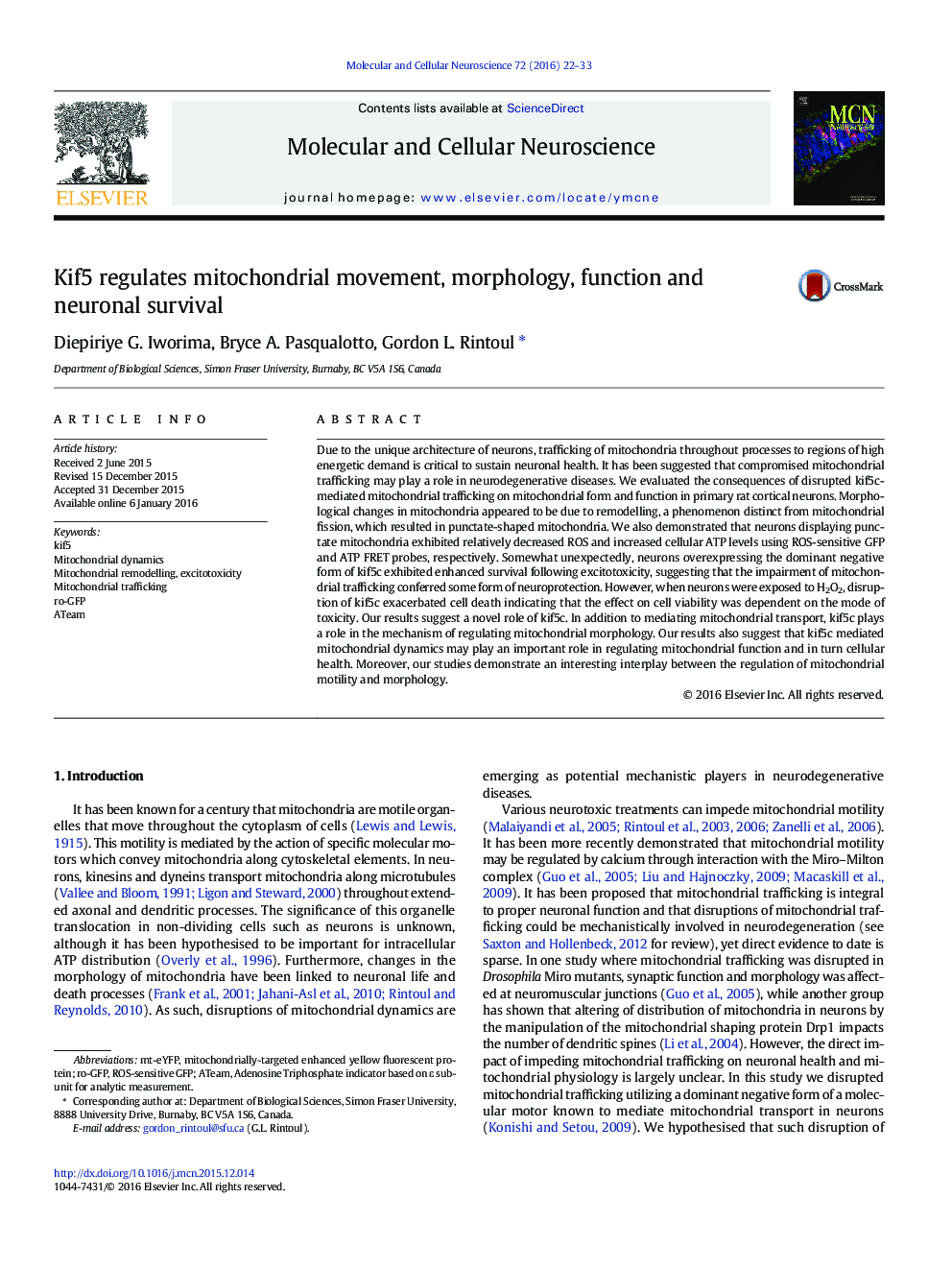| Article ID | Journal | Published Year | Pages | File Type |
|---|---|---|---|---|
| 2198419 | Molecular and Cellular Neuroscience | 2016 | 12 Pages |
•Mitochondrial movement was disrupted using a dominant negative kif5c tail construct.•Kif5 plays a role in regulating mitochondrial morphology.•Mitochondrial remodelling is a distinct phenomenon from mitochondrial fission.•Impaired mitochondrial transport increased ATP levels and decreased ROS levels.•Kif5c disruption was neuroprotective during excitotoxicity but not H2O2 toxicity.
Due to the unique architecture of neurons, trafficking of mitochondria throughout processes to regions of high energetic demand is critical to sustain neuronal health. It has been suggested that compromised mitochondrial trafficking may play a role in neurodegenerative diseases. We evaluated the consequences of disrupted kif5c-mediated mitochondrial trafficking on mitochondrial form and function in primary rat cortical neurons. Morphological changes in mitochondria appeared to be due to remodelling, a phenomenon distinct from mitochondrial fission, which resulted in punctate-shaped mitochondria. We also demonstrated that neurons displaying punctate mitochondria exhibited relatively decreased ROS and increased cellular ATP levels using ROS-sensitive GFP and ATP FRET probes, respectively. Somewhat unexpectedly, neurons overexpressing the dominant negative form of kif5c exhibited enhanced survival following excitotoxicity, suggesting that the impairment of mitochondrial trafficking conferred some form of neuroprotection. However, when neurons were exposed to H2O2, disruption of kif5c exacerbated cell death indicating that the effect on cell viability was dependent on the mode of toxicity. Our results suggest a novel role of kif5c. In addition to mediating mitochondrial transport, kif5c plays a role in the mechanism of regulating mitochondrial morphology. Our results also suggest that kif5c mediated mitochondrial dynamics may play an important role in regulating mitochondrial function and in turn cellular health. Moreover, our studies demonstrate an interesting interplay between the regulation of mitochondrial motility and morphology.
